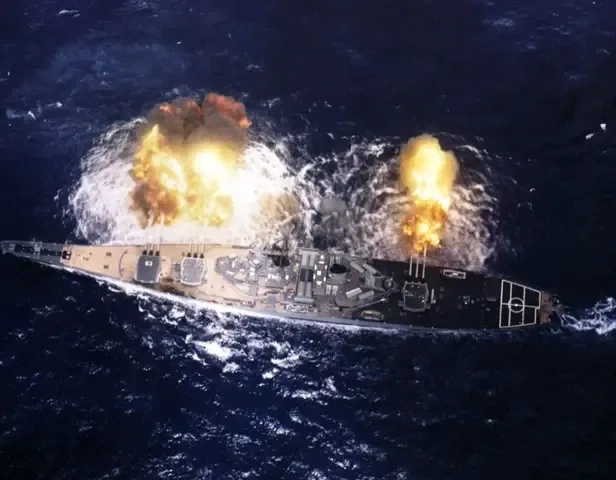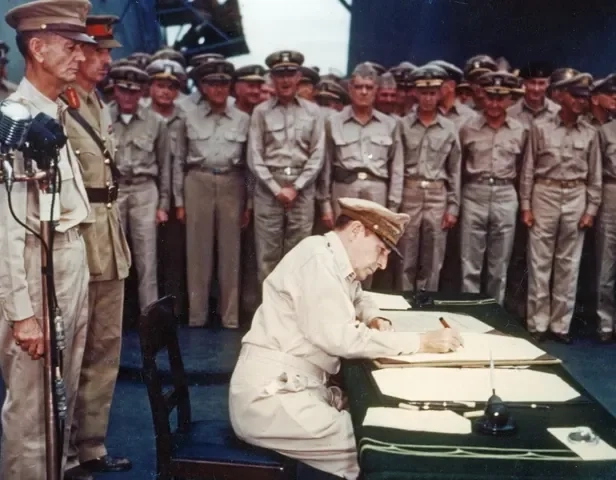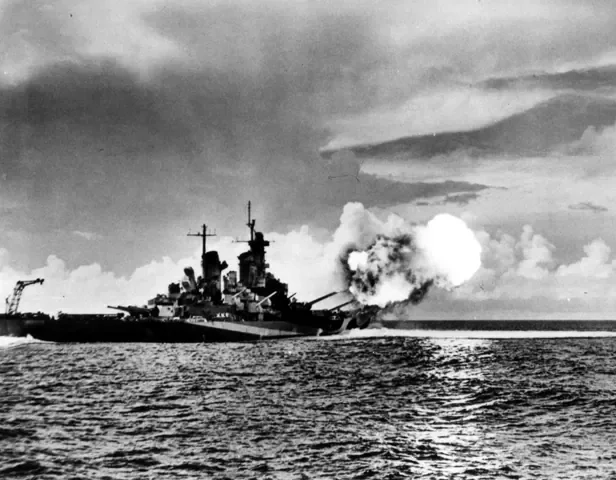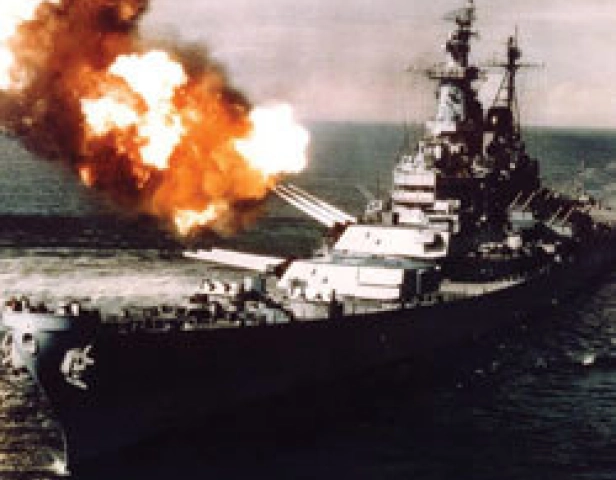
The Gulf War (1990-1991)
Before the War: Earnest Will
The battleship had been brought out of mothballs to be recommissioned in 1986. In 1986 and 1987, attacks on oil tankers going to and from Iran increased. As a result, USS Missouri was sent to the North Arabian Sea to escort Kuwaiti tankers now sailing under a U.S. flag. This was dubbed Operation Earnest Will. On 11-12 October, the battleship escorted her first convoy through the Gulf of Oman and the Strait of Hormuz into the Persian Gulf.
Operation Desert Shield/Operation Desert Storm
Operation Desert Shield was prompted by the invasion of Kuwait by Iraq on 2 August 1990. The operation was a buildup phase in which Coalition Forces--comprised of Kuwaiti, American, British, French, Saudi Arabian, and Egyptian troops--moved into the region to discourage Iraq from invading Saudi Arabia after invading Kuwait. On 29 November 1990, the UN passed Resolution 678: a deadline for Iraqi troops to evacuate Kuwait by 17 January 1991. That deadline passed with no withdrawal and the defensive Operation Desert Shield became combative Operation Desert Storm.
Battleship Missouri arrived in the Middle East in the first few days of 1991. Her first accomplishment in the Persian Gulf was the disarming of a mine by her Explosive Ordnance Disposal (EOD) team on 9 January. She then spent the period between 8-15 January underway in the Persian Gulf conducting a variety of operations. On 17 January, USS Missouri fired her first Tomahawk missile aimed at Baghdad. The next day, she fired thirteen more. By 20 January, the battleship had fired a total of 28 missiles.
On 29 January, Iraqi forces took the coastal town of Kafji in Saudi Arabia. Battleship Missouri steamed there to ensure that reinforcements could not reach the Iraqi forces. On 3 February, the battleship fired her main battery in anger for the first time since the Korean War. She targeted concrete command-and-control bunkers as well as Iraqi artillery positions, firing 112 16” rounds between 5 to 7 February. The next week, Missouri fired 69 16-inch rounds during fire-support missions. This time, her targets were infantry battalions, a mechanized unit, an artillery battery, and a command bunker.
Later in the month, she headed north towards Kuwait City, but before she could provide fire support, a mine-free lane six miles long and one thousand yards wide had to be created so the battleship could hit targets further inland. Her EOD team contributed to this effort, bringing their mine disarmament total to ten. She then bombarded Faylaka Island, which was under Iraqi control.
On 24 February, Coalition forces began their ground war for Kuwait. The battleship provided fire support for ground troops. On 25 February, she feinted an amphibious assault on Kuwait. When a Silkworm missile seemed headed straight for the battleship, HMS Gloucester was there to fire two Sea Dart anti-air missiles to intercede. the first time an anti-air missile had successfully engaged and destroyed an enemy missile during combat at sea. In return, the battleship turned her 16-inch guns toward the Silkworm battery and destroyed her target. The land war by the Coalition forces proved a success and the Gulf War ended in a Coalition victory on 28 February 1991.
Gulf War Stats
| Ammunition Type | Number of Rounds Fired |
|---|---|
| 16-in./50 cal. Guns | 759 rounds |
| Tomahawk Missiles | 28 missiles |




